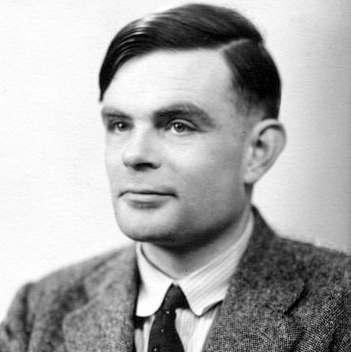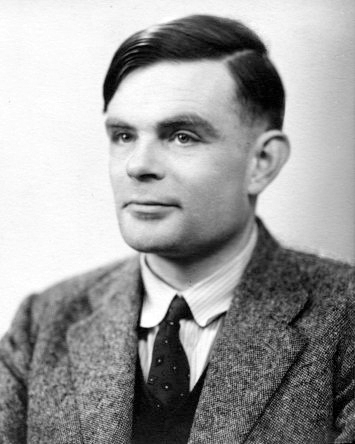 It’s not every day that a computer science professor approaches the theater arts department with a proposal for a play. But that’s exactly what happened last year when Gene Luks asked if the theater department might consider a production of Breaking the Code, a play about mathematician Alan Turing (left).
It’s not every day that a computer science professor approaches the theater arts department with a proposal for a play. But that’s exactly what happened last year when Gene Luks asked if the theater department might consider a production of Breaking the Code, a play about mathematician Alan Turing (left).

Luks, professor emeritus and head of the Department of Computer and Information Science, informed the theater faculty that 2012 was the centennial of Turing’s birth and suggested that a production of this play would add an important dimension to other campus activities planned in celebration.
“He planted the seed,” said theater instructor Joseph Gilg, who has been aware of the play since it was originally produced in the late 1980s and has long been interested in directing it. The suggestion sparked a positive response, and Gilg directed the UO debut of Breaking the Code this spring.
The play’s title has multiple meanings. Turing is legendary for cracking the Enigma code the Germans used to transmit messages between submarines blockading the United Kingdom during World War II. Turing’s work is famously credited with hastening the end of the war and launching the field of computer science.
In his personal life, Turing also broke the social code against homosexuality.
The crux of the play, says Gilg, is an exploration of societal values in the mid-twentieth century, when “people were unable to reconcile that someone was, on one hand, a hero and on the other hand, a homosexual.”
While Turing did not necessarily lead a closeted life, he was not persecuted for his sexuality until well after the war. In 1952, he was arrested for “gross indecency” and found guilty. For sentencing, he was given a choice between prison and “chemical castration,” which involved treatment with female hormones.
Turing chose the latter, and went on to suffer side effects such as the growth of breasts and crippling depression. He died in 1954 from cyanide poisoning, two weeks before his forty-second birthday; his death was ruled a suicide.

Turing’s code-cracking work—which was top secret at the time—was not widely acknowledged until the 1970s, when documents detailing his contribution to the war effort became unclassified. Thus began a reframing of his life story. In 1999, Time magazine named him one of the “100 Most Important People of the Twentieth Century.” In 2009, British Prime Minister Gordon Brown offered an official apology on behalf of the British government for “the appalling way he was treated.”
“Turing was a fascinating character,” said Gilg. “He would be considered a nerd today” for his eccentricities. For example, he was known to wear a gas mask while riding his bicycle around Bletchley Park, the site where he completed some of his most important work. While many thought this simply bizarre, it was in fact Turing’s practical solution for dealing with allergies.
In the production of the play, Gilg made another connection with the computer science department by recruiting some of its advanced students to help the actors interpret their roles. And the department also helped fill the house for the production, inviting computer science faculty members and students.
Several other activities on the UO campus took place throughout the 2012–13 academic year in celebration of Turing, including an exhibit at Knight Library entitled Alan Turing—the Founder of Computer Science, which ran from February through April; it featured photos of Turing as well as the machines he worked with (such as the one pictured above) and the shelter he worked in during World War II.
The Department of Computer and Information Science also hosted several guest speakers in May who shared their perspectives on Turing’s legacy.
-Lisa Raleigh




 "You are your microbes" is the message from UO biologists in a TED Ed video and TEDx talk.
"You are your microbes" is the message from UO biologists in a TED Ed video and TEDx talk.

